Boardwalk closed. University closed. Santa Cruz met the moment, but at a huge cost
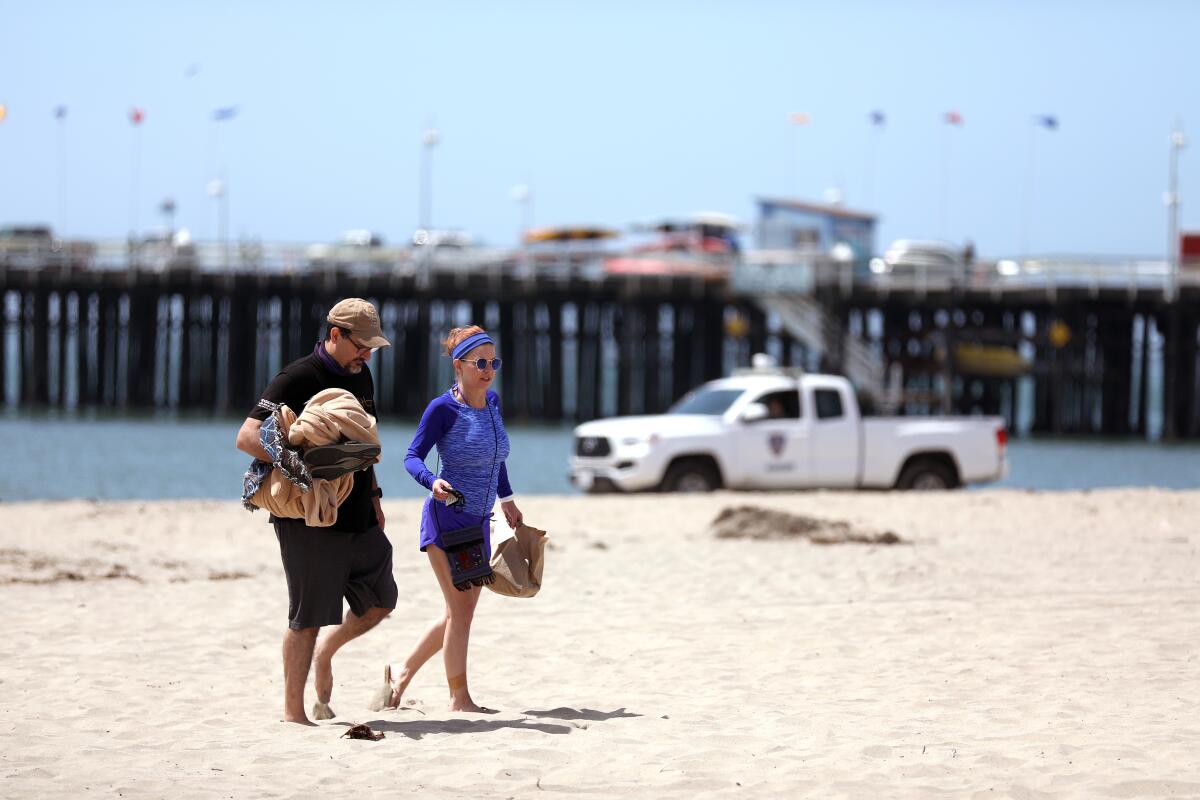
SANTA CRUZ — The white pick-up truck began rolling down Boardwalk Beach late Friday morning. Dozens of people had spread out on the sandy expanse, and some splashed in the water, enjoying the mid-70s weather as a woman with a wand blew bubbles into the soft breeze.
It was a day before Memorial Day weekend, and there was only a fraction of the crowd Santa Cruz usually sees before the kickoff to summer. The Santa Cruz Beach Boardwalk sat eerily empty, closed earlier this year for only the second time in its 113-year history. In the distance, waves rolled into Steamer Lane, the famed surfing spot off West Cliff Drive.
Around 11 a.m., the Santa Cruz Police Ranger announced that the beaches were officially closed from 11 a.m. until 5 p.m. under the countywide shelter-in-place order. People participating in water activities could stay, the ranger said, but everyone else had to leave.
Rick Tracewell and Debi Tipple packed up their things, and along with other beachgoers, exited the strand they had traveled so far to visit.
“I’m thankful that there are hours that we can come out here,” said Tracewell, who arrived with Tipple on Thursday from Sacramento and learned about the beach closures while on the drive down.
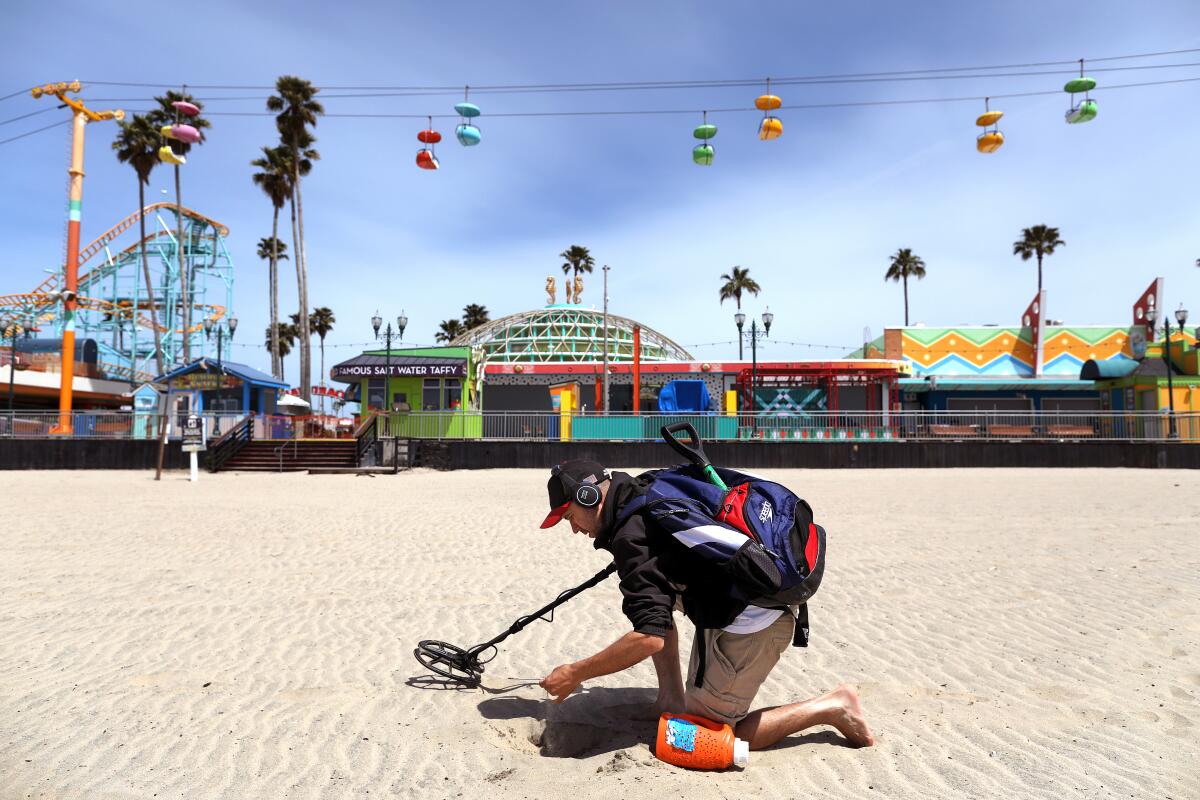
Santa Cruz County, home to 273,200 people, includes some tech businesses and other industries, but its economic engine largely depends on seasonal tourism and the revenue generated by the 19,000 students and hundreds of faculty and employees at UC Santa Cruz. That campus is now closed, and city and county have been urging visitors they once welcomed to stay away, at least for now.
The strict measures have undoubtedly helped the town and Santa Cruz County keep their COVID-19 cases and deaths low in a region hit hard by the virus. Santa Cruz County has reported two coronavirus-related deaths and 212 cases. In comparison, its neighbor Santa Clara County is reporting 141 deaths and more than 2,700 cases. Alameda County has more than 3,200 cases and 95 deaths.
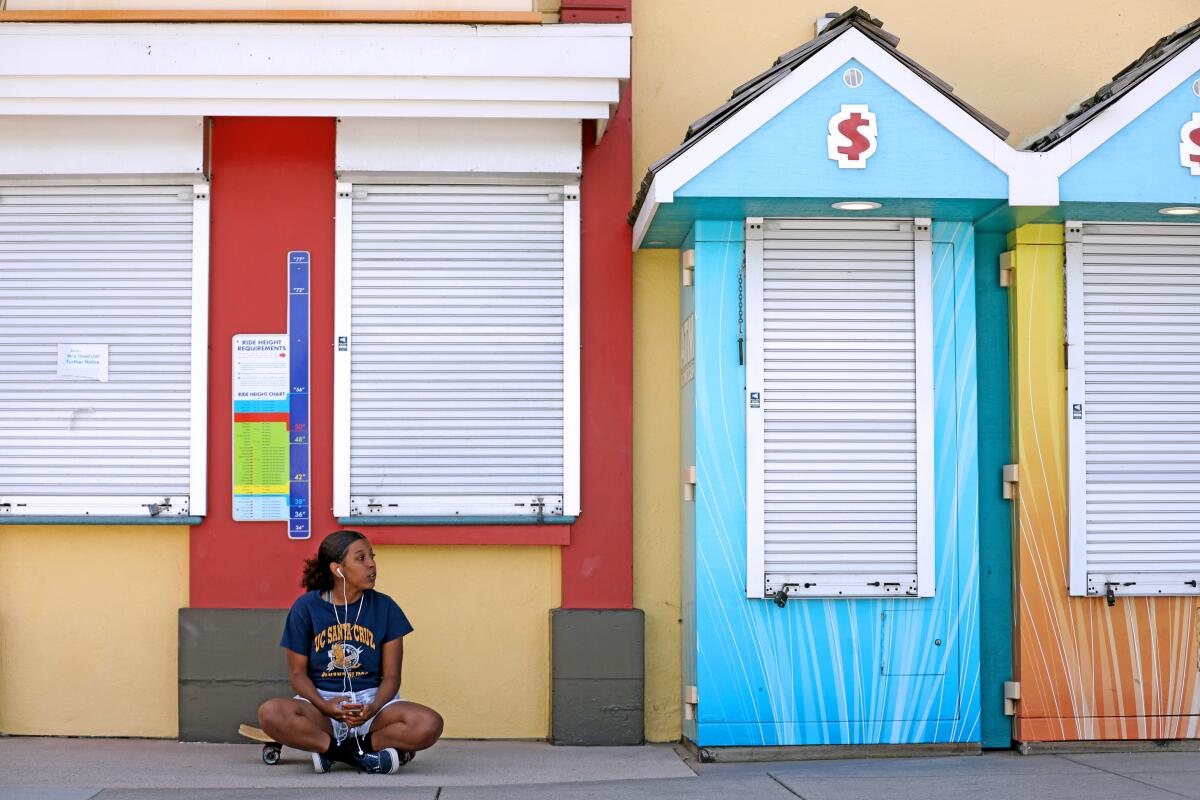
But the county must now weigh how quickly it will reopen to keep businesses alive and residents safe, given that they have successfully flattened the curve faster than their neighbors. County Public Health Officer Dr. Gail Newel issued a new order, effective Wednesday, allowing in-store retail shopping and religious services to resume.
On Friday, the county Board of Supervisors held a meeting on whether to approve moving further into the second stage of reopening under the governor’s road map. The board unanimously approved the effort, and Newel said a supplemental health order will allow indoor and outdoor dine-in at restaurants and barbershops and salons to reopen. She also warned the county will likely see an increase of cases and urged those most vulnerable to keep staying home.
As Northern California counties reported rising numbers in mid-March, Santa Cruz County joined six others in the greater San Francisco Bay Area in issuing a shelter-in-place order. The city of Santa Cruz already planned to close city facilities in anticipation of spread, Mayor Justin Cummings said.
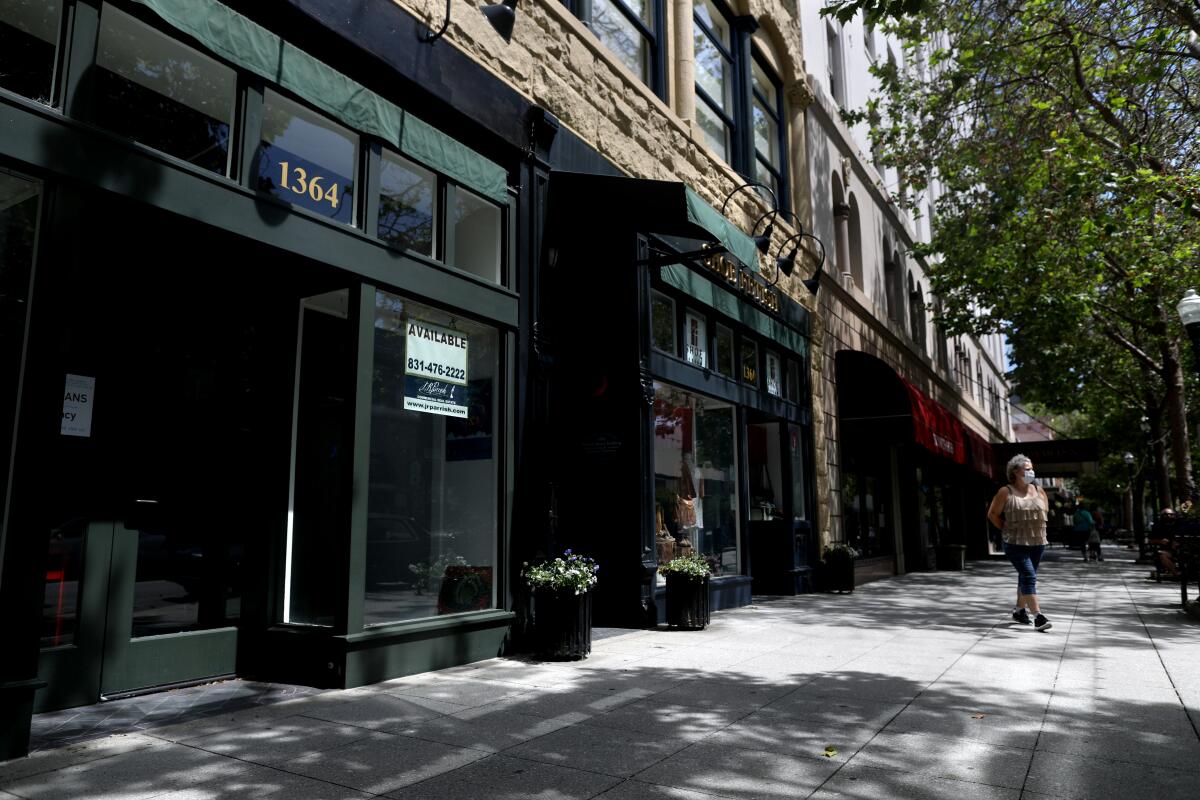
In early May, Cummings used his Sunday column in the Santa Cruz Sentinel to remind residents they could not “rush the road to recovery.” He wrote of the second increase of cases and deaths in San Francisco from the Spanish flu in 1918 after the city re-opened too quickly.
The county public health department announced May 22 an investigation into four separate clusters of COVID-19 cases, attributed to family gatherings as the county eases some restrictions. While their numbers remain relatively low, reopening could present a challenge.
“It’s great that we’re in the position that we’re in,” Cummings said in an interview. But “if we start seeing our numbers going back up, we’re going to likely shut things back down again.”
Early projections predicted the county could have between 200 and 400 deaths, said Ryan Coonerty, a Santa Cruz County supervisor.
The economic impact has been damaging — the county’s unemployment rate hit 17.4% in April, up from 8.1% in March, according to the California Employment Development Department. Residents and business owners, who largely complied with the shelter-in-place order, are now asking when they can restart after shutting down for so long, Coonerty said. But there is no easy answer for a place like Santa Cruz, whose fate is linked to its neighbors.
“We’re trying to figure out what our path forward is because we only control part of our destination,” he said.
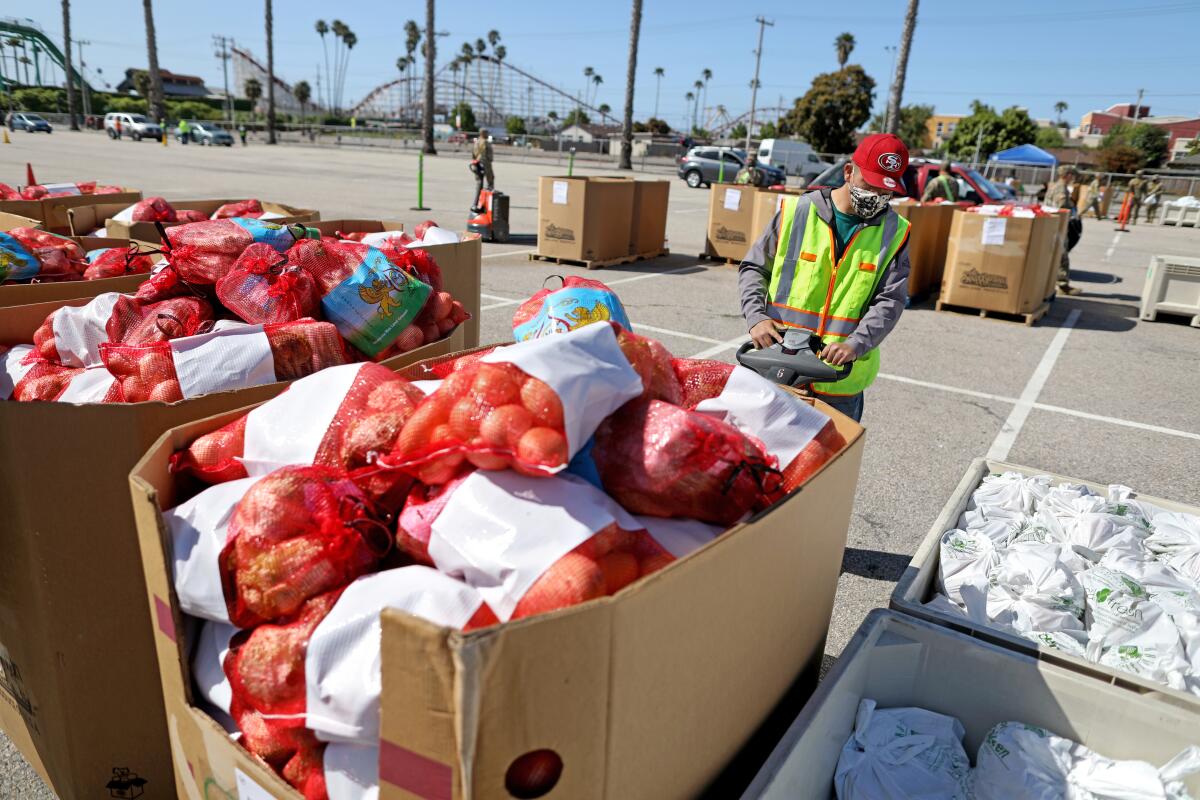
On Friday, the Second Harvest Food Bank held its weekly drive-through pick-up at one of the Boardwalk’s parking lots. Beach Flats resident Antonia Hernandez, 46, and her husband, Felipe Ruiz, 42, arrived by foot, pushing a small cart to carry their items.
Ruiz lost his job at a panaderia as a result of the pandemic. This was their third time picking up offerings from the food bank — they received food weighing nearly 50 pounds — and Hernandez said she hoped to see the local economy open up again, cautiously, so they can afford to pay their bills and rent.
“This is not a game,” she said, teary eyed as she spoke about the toll of the virus. “It’s so sad, everything that is going on. We don’t want this [virus].”
On Pacific Avenue, the city’s downtown, local storefronts doors were wide open but blocked by tables, a sign of curbside pick-up. The sidewalks, which would’ve been bustling on a usual Friday, were mostly empty with an occasional pair strolling by.
Marla Reckart and her daughter Sara Cronin picked up a couple of books from Bookshop Santa Cruz before they stopped by Pacific Trading Co., a women’s clothing boutique, to buy a pair of pajamas. After coordinating the selection with co-owner Anandi Heinrich, who held up options through the glass windows until they approved one with thumbs up, they relayed the payment by phone, and Heinrich hung the bag on one end of a metal rack, inched the door open and pushed it through so Cronin could grab the bag.
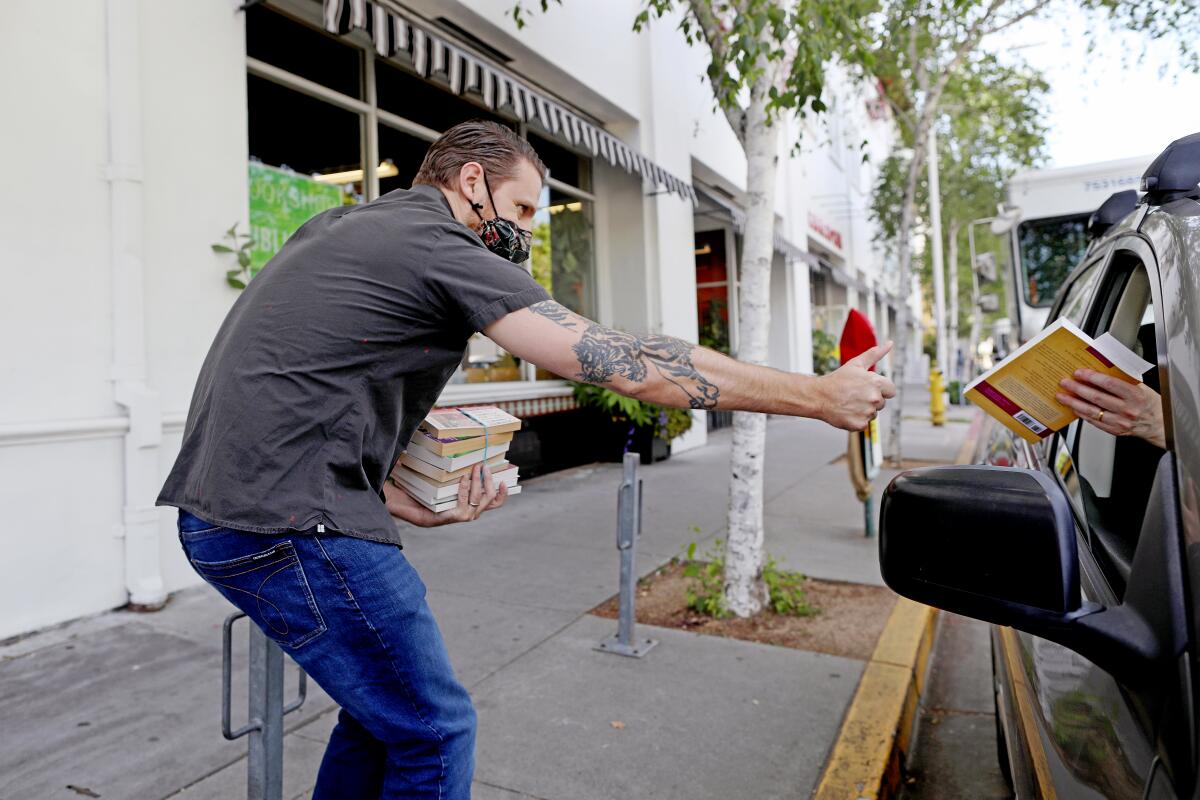
Curbside pick-up is tricky for a clothing store. Heinrich said she sets up virtual appointments and sends customers home with a box of clothing to choose from.
“We hope to be reopening in a way that makes sense,” said Heinrich, who chose to close the store on March 15, before the official order. “But we also feel cautious in that we want to make sure that we’re doing it in a way that is safe for our customers and for our staff.”
At Bookshop Santa Cruz, a longtime community hub, owner Casey Coonerty Protti shared a similar sentiment. On Friday, dozens of curbside orders were fulfilled by the hour as the bookstore’s information center was transformed into a central workstation, with employees weaving between shelves to keep their distance. Puzzles were spread out on the floor for easy access; the event space now featured tables covered in items for care packages.
Protti, wearing a Harry Potter-themed mask, explained their new workflow: No more than 10 employees worked inside at the same time, in different parts of the 20,000-square-foot store. And with a limited capacity reopening expected in weeks, the store will be restructured to accommodate curbside pick-up, in-store services and online orders.
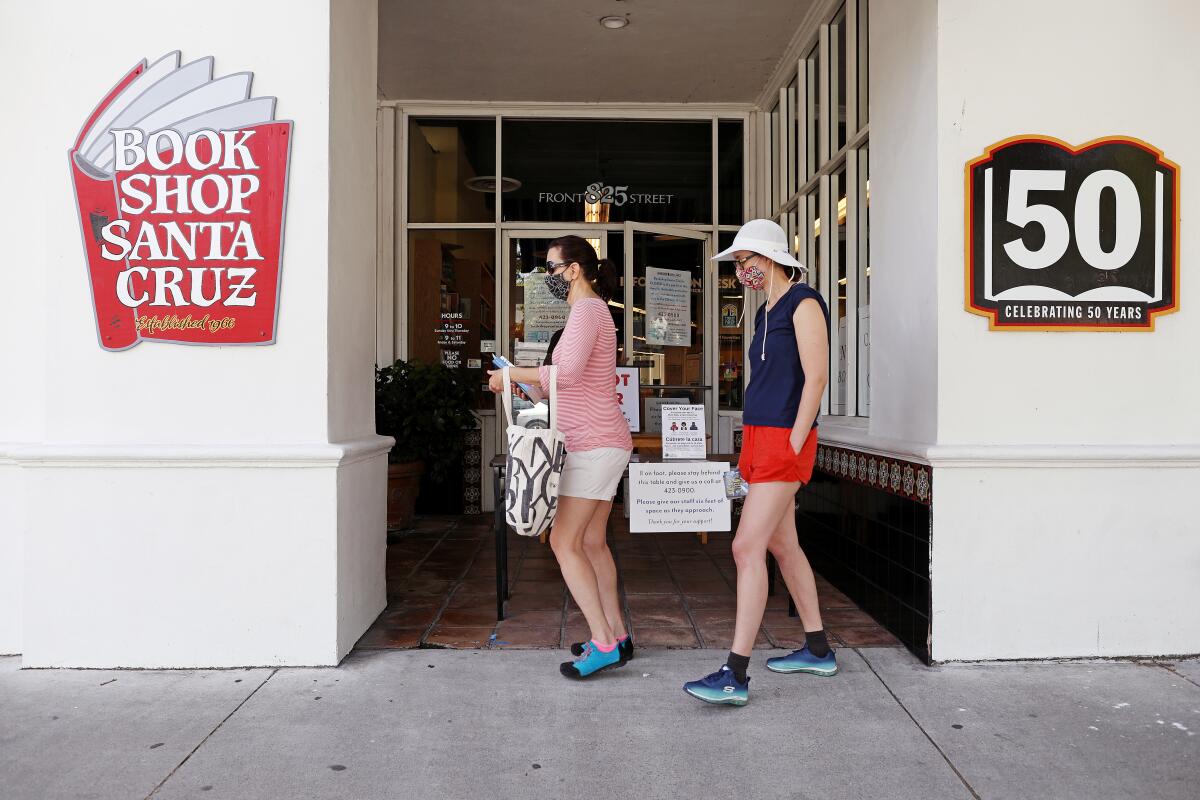
Even with a steady stream of customers, the store is doing only 60% of regular sales, she said. But Protti, whose brother serves on the county Board of Supervisors, a seat previously filled by their father, said she is on the side of restrictive measures to avoid a second rise in cases.
“I understand why people are itching to reopen, and the amount that’s at stake in terms of the economy and jobs and people’s livelihoods,” said Protti, who was able to bring back her 40-plus staff after receiving a Paycheck Protection Program loan. “But I’m going to be completely driven by science.”
When they’re ready to reopen, she said she believes the community will be there, rallying around local businesses.
“I do think people are going to come back,” she said. “I really do.”
More to Read
Sign up for Essential California
The most important California stories and recommendations in your inbox every morning.
You may occasionally receive promotional content from the Los Angeles Times.










